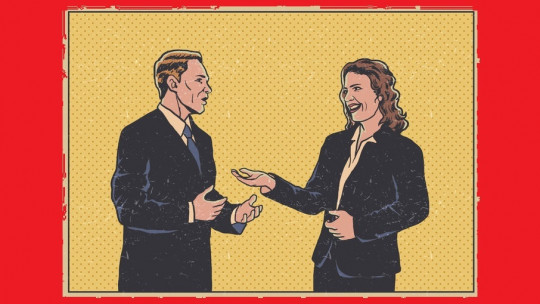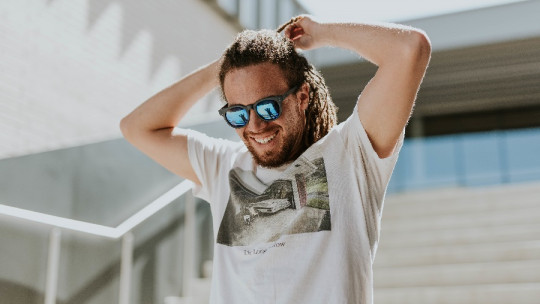There are not many studies on the relationship between posture and personality. However, it is well known that the extent to which one changes position in the presence of others is an element that provides information about the person’s level of self-esteem, extroversion or introversion, or even behavioral styles and behaviors. lived papers.
Postures adapted to different circumstances and social contexts are defined by cultural norms, but in the presence of certain moods or emotions, recurrent postures are assumed. In this PsychologyFor article, we will see the meaning of body postures With Images.
Socially recognized positions
Although the decoding of non-verbal communication dictated by the position of the body in space maintains a certain ambiguity, it is possible to identify some typical postures that refer to meanings easily recognizable by the interlocutors.
Sarbin and Hardyck used drawings of stylized human figures to experimentally verify the agreement of the interpretations given to the different positions The experiment consisted of subjecting some subjects to stylized images representing people in different positions and asking them to attribute a precise meaning to each figure. Most of the research participants correctly interpreted the meaning of the represented body postures.
Some positions presented by Sarbin and Hardyck (1953) are the following: a) curious; b) perplexed; c) indifferent; d) rejection; e) observe; f) satisfied with himself; g) cozy; h) result; i) sneaky; j) search; k) observe; l)attentive; m) violent, anger; n) agitated; o) relaxed; p) surprised, dominant, suspicious; q) sneaky; r) shy; s) careful; t) affectionate.
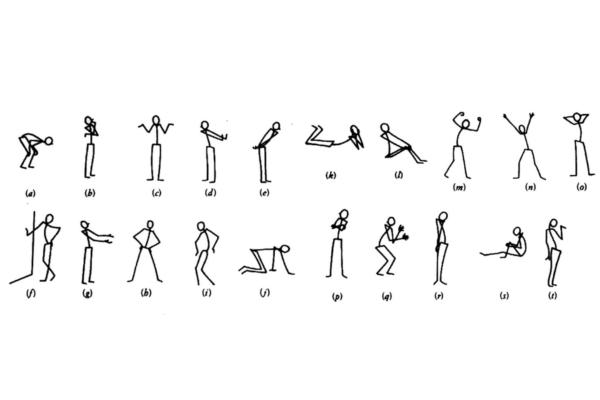
Meaning of the postures for Lowen
Alexander Lowen, in his 1985 book titled “Body Language,” stated that the structure of a person’s body is also affected by changes in character. According to Lowen, in fact, By observing the body structure and attitudes, it is possible to obtain information about the emotional state of the individual Through postural attitudes we can recognize certain characteristics of the person’s posture and character psychology.
Posture, in fact, depends on the environment in which we have grown up and also on all the events we have gone through in our lives that have caused certain contractions of the muscles, facilitating a certain posture rather than another. For example, if we have a strong need for affection within us, our back will tend to hunch, while if, for example, we are very angry, it will enlarge.
It is precisely with the principle that body and mind are a single entity, that Lowen has developed 5 different types of attitudes that outline different psychology and posture traits In the following sections you will find the meaning of the main body postures with images.
If you wish, you can purchase the book here Body Language: Physical Dynamics of Character Structure by Alexander Lowen.
bent posture
As its name indicates, the body of those who take the folded posture is characterized by
- Bending towards themselves.
- Curved shoulder muscles.
- The sunken chest.
- The head is tilted and forward.
It is generally possible to observe this posture in people with a thin, tall body, still looking like teenagers despite being adults, often wearing glasses because they are nearsighted. The feet appear to have little contact with the ground and the legs are so thin that they require the knees to shake to support the body.
They are people who have a great inner emptiness inside them, probably due to low maternal affection received during childhood and They are people who tend to depend on others although this weakness is masked with extreme independence
It would represent the first drawing of the following image.
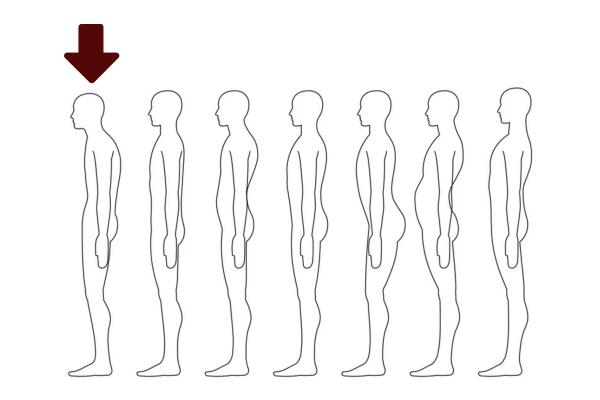
Split posture
This position stands out for the following characteristics:
- A body with very nervous muscles.
- Thinness.
- Feet facing outwards.
- Lean and static face.
- Arms swinging.
This attitude implies, in a characteristic way, low self-esteem and repression of one’s own feelings due to a rejection that has most likely occurred during the period of childhood. The person will try to fill the gap of affection that they have been deprived of by demonstrating – with words – very sentimental in order to make themselves more kind to other people, without really being so. Duality consists precisely in expressing one thing, but demonstrating – physically – another.
It would approximately represent the second drawing in the following image.
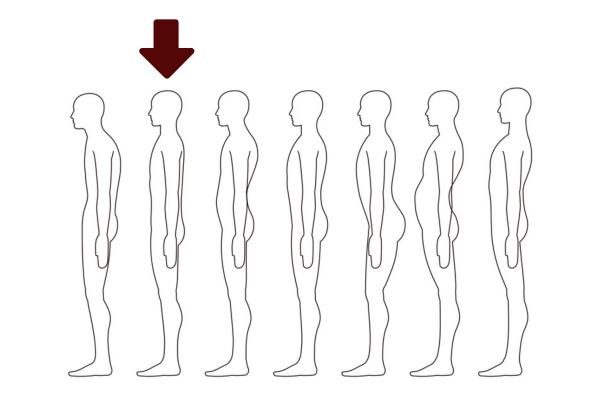
swollen posture
This position is characterized by:
- Swollen chest.
- Tense neck.
- Stiff pelvis.
- In general, the upper part of the body stands out in relation to the lower part, making the legs and feet appear disproportionate.
In character, he is a person who he denies his feelings a lot , in the sense that it precisely rejects its existence and prefers the idea of being able to control everything and everyone. Whoever has this type of posture, although he can often reach important positions in life, will always need to exercise power over others to fill his own weakness. want to control and dominate every situation; This power game will inevitably lead him to be dominated by other people, like a kind of addiction.
An example is the last drawing in the image.
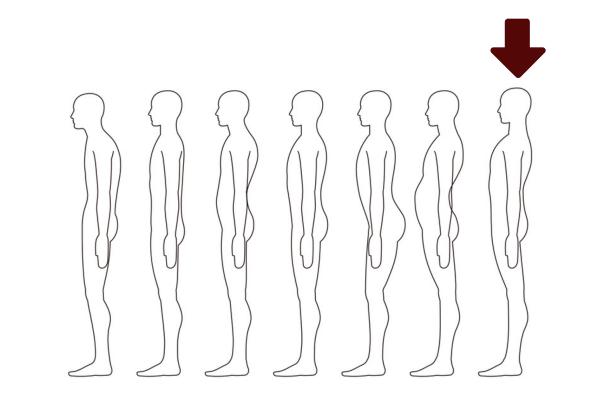
submissive posture
The body of the person who takes a submissive posture is:
- Literally crushed on itself, making it lower
- The neck appears larger as it hides behind the shoulders;
- The twisted pelvis
- Contracts glutes;
- In general, all muscles contract.
Determines the character of people often children , who behave as they want to the detriment of others: they think that only by acting as they want can others be loved. Often irascible , they will tend to develop good muscles: by keeping them tense, they will try to avoid their biggest worry, that is, losing control and making true feelings come out. Many times he hates his boss or someone with a higher social position than his.
The posture could resemble the third and sixth drawings in the image.
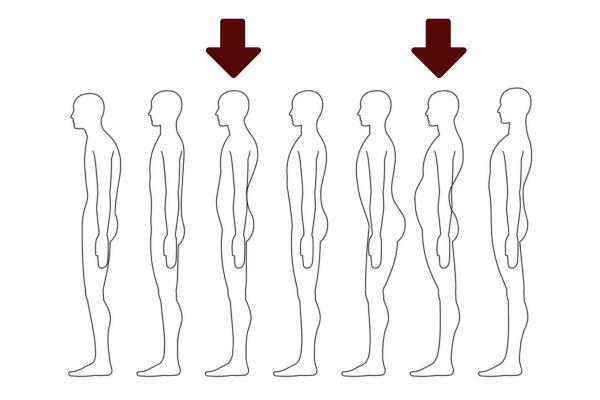
rigid posture
Very similar to the posture that soldiers take, the body is:
- Well positioned, as if always on alert
- The stiff neck
- The back is straight
- The chest is out, swollen
The rigidity that it expresses on the body is nothing more than the portrait of what is inside, that is, a rigid personality that leaves little room for new stimuli; a rejection by a parental figure may have influenced the adult’s rigid attitude, expressing deep sadness
An example is the fourth drawing in the image.
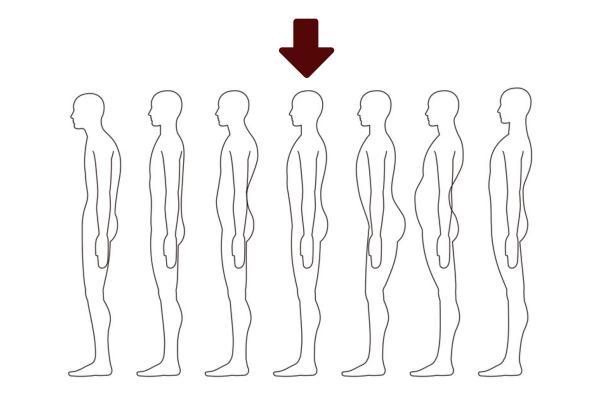
This article is merely informative, at PsychologyFor we do not have the power to make a diagnosis or recommend a treatment. We invite you to go to a psychologist to treat your particular case.
If you want to read more articles similar to Meaning of body postures we recommend that you enter our Social Psychology category.
Bibliography
- Cozzolino, M. (2003). Invisible communication. Gli aspetti non verbali della comunicazione. Milan: Edizioni Carlo Amore.
- Ferrari, A. (2019). Linguaggio del corpo: the 5 postures of Lowen. Retrieved from: https://www.afcformazione.it/blog/linguaggio-del-corpo-le-5-posture-di-lowen/
- Grella, F. (2018). Posture and attack. Non-verbal communication in some psychopathological disturbances. Lecce: Youcanprint.
- Longobardi, C., Quaglia, R. (2011). Il didattico colloquium. Effective communication and relationships with students’ families. Milan: Erickson.
- Posturaeasy (2020). Gli Atteggiamenti Posturali, the guide to Psychology and Posture. Retrieved from: https://www.posturafacile.it/2020/01/gli-atteggiamenti-posturali-la-chiave-tra-psicologia-e-postura/
- Simeone, D. (2002). The educational consultancy. Pedagogical dimension of the relationship of children. Milan: Vita e Pensiero.




